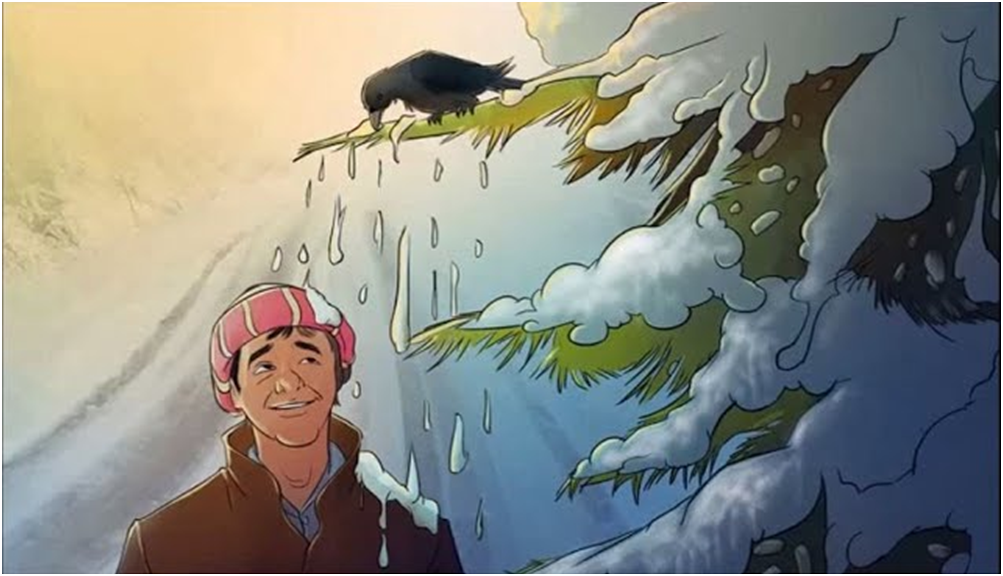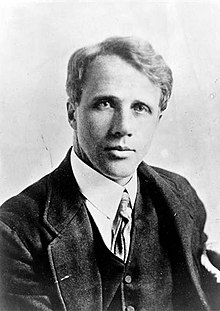- Books Name
- First Flight and Foot prints
- Publication
- ACERISE INDIA
- Course
- CBSE Class 10
- Subject
- English
Poem-1
Dust of Snow
By Robert Frost

Dust of Snow Poem Introduction
Robert Frost's poem "Dust of Snow" is a simple and short poem with a deeper and larger meaning. The poet explains how something as insignificant as getting snow on one's body can brighten one's day. Robert Frost expresses the poem's message in these words:
“Always, always a larger significance…
A little thing touches a larger thing.”
Dust of Snow Poem Summary
Robert Frost's short poem sheds light on the unimaginable healing power of nature and small things. There is nothing that nature cannot cure, from a bad mood to illness. On one of these bad days, a crow's movement near a hemlock tree dusted snow on the author. The snow immediately makes him happy. His day improves dramatically. As a result, the supremacy of nature as a whole made him realise how insignificant his problem was. The fact that the hemlock tree is poisonous combined with the crow being a symbol of doom and fear, is used ironically in the poem as the carriers of happiness in the narrator's life.
The poet has attempted to demonstrate through these objects that creatures associated with negative aspects of life can sometimes be the source of change and happiness. Being outside in nature, with all of its unpredictability, can benefit anyone, at any time, anywhere.
Dust of Snow Poem Explanation
The way a crow
Shook down on me
The dust of snow
From a hemlock tree
- Shook- shake
- Hemlock- a poisonous tree with small white flowers
The poem is set in a scene in which the poet is depressed and walking by a tree, a hemlock tree. The hemlock tree is poisonous. A crow happens to throw snow dust on him as he passes by. It is unclear whether it falls on his head or shoulders because there is no mention of this in the poem. Furthermore, the readers are left in the dark about the bird's specific action. Whether the crow was landing, shivering from the cold, readjusting itself on the branch, or taking off, it dropped some snow on the author. The two natural agents, the hemlock tree and the crow, represent sadness and gloom in this scene, just as the poet's mood was in the opening scene.
Has given my heart
A change of mood
And saved some part
Of a day I had rued.
- Rued- held in regret
The author was having a bad day for unknown reasons. But the snow falling on his head instantly brightened his mood. He had already had a bad day, but the crow and the hemlock tree saved the rest of it. Generally, the hemlock tree and the crow are used for negative references, but the poet used them beautifully to show that even the most unlucky things can bring joy and happiness. One should not take anything for granted and should be open to whatever way nature chooses to bless us.
Dust of Snow Poem Literary Devices
1. Rhyme Scheme- abab cdcd
2. Alliteration- the occurrence of the same letter or sound at the beginning of adjacent or closely connected words.
The instances of alliteration are as follows-
1. Has given my heart
2. And saved some part
1. inversion – when the structure of a sentence is changed by the poet to create rhyme, this poetic license is called inversion. In stanza 1, inversion can be seen.
2. assonance – the prominence of a vowel sound throughout a line is called assonance. In stanza 1, line 2 – “Shook down on me” – ‘o’ sound is prominent.
3. enjambment – when the same sentence continues to the next line without the use of any punctuation marks, it is called enjambment. It has been used thorughout the poem.
About the Author

Robert Frost is a well-known poet from the United States. He possessed a strong command of American colloquial speech and created realistic depictions of early rural life. His great work in poetry mostly depicted rural life in New England in the early twentieth century. He used poetry to investigate complex philosophical and social issues. Individuals honoured and frequently quoted him for his work throughout his life, and he also received four Pulitzer Prizes.

 Online English tutor
Online English tutor
 ACERISE INDIA
ACERISE INDIA
